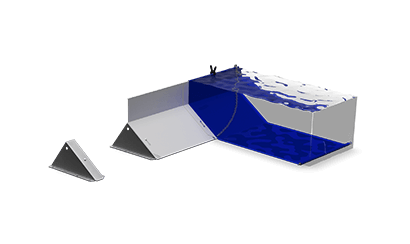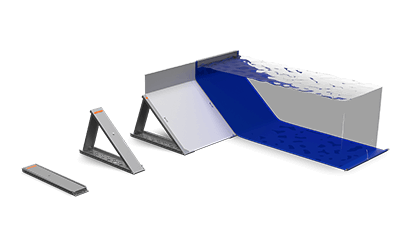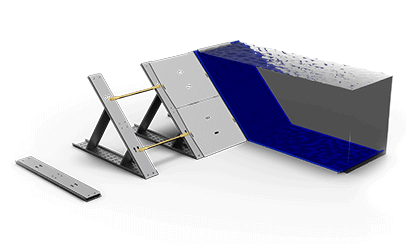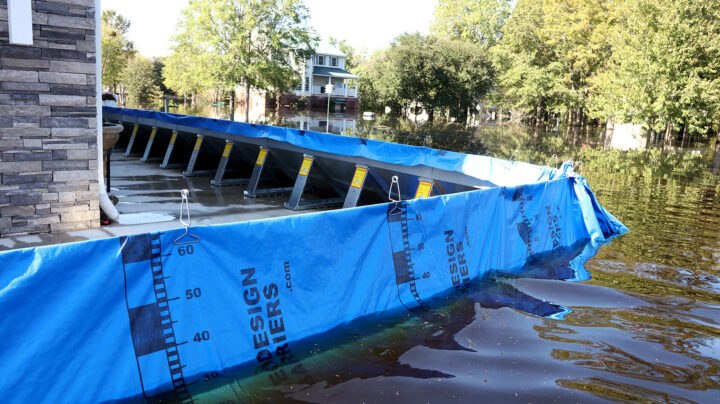Alternative To Sandbags For Flooding
When a crisis strikes and the average citizen or business needs flood protection fast, sandbags can be a quick and easy solution to help prevent residual damage. They're a popular option for people who want to use what they have at hand to help create calm in a crisis.
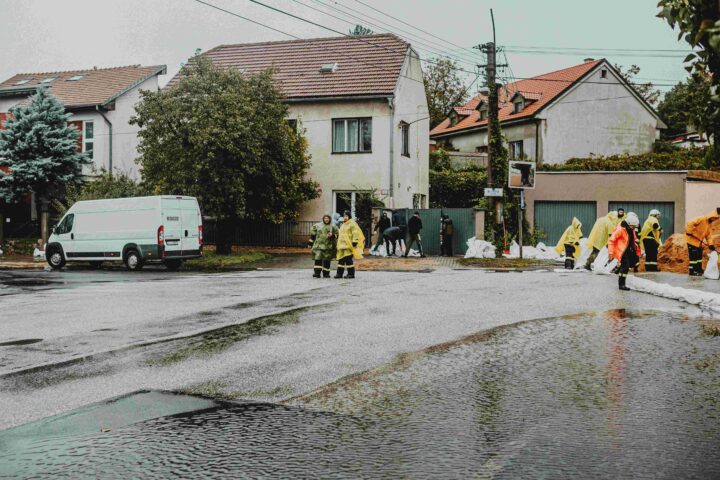
People often attempt to make them on their own or buy some to store at home or on commercial properties in order to safeguard their homes and business premises. Traditional sandbags are a solution that people feel comfortable with - but are they right option considering how many new cost-effective and not-contaminated options are on the market?
Can traditional sandbags hold a candle to long-lasting, easy-to-deploy and certified alternatives? Let's find out.
Climate protection and flood control is changing
Can they provide effective flood control and actually prevent flood water from destroying property and endangering human life?
While sandbags can help to mitigate a flood threat and help address some of the flood risks people face in emergency situations, they don't provide a comprehensive enough flood barrier in times of crisis and can create other problems for home and business owners. Let's take a closer look at how and why this happens.
The limitations of conventional sandbags to prevent flood damage
At first glance there are some high-level reasons why sandbags aren't always a suitable solution. They can be a good support system for those who don't have immediate access to something more secure or more difficult to get dirty. With this in mind, it's important to consider your other options.
Labor intensive deployment
Sandbags for flood protection can be helpful but they are difficult to fill and stack. It takes multiple people to quickly "build" the bags and create an effective flood barrier which will often only stand up behind another, more effective solution in times of crisis.
Easy to contaminate or permeate
Sandbags absorb water, as well as everything that's in the water - including bacteria, sewage, and debris. This means they can often only be single-use items because they can't be properly cleaned and stored. And it makes them difficult to remove after emergency situations, especially because of how heavy they become.
Sandbags make it harder to create a watertight seal
Stacking sandbags for flood protection can lead to more vulnerable entry points where water, flood debris and mud can get deeper into the barrier. This can lead to seepage and water damage and ultimately sabotage some of your efforts to protect and preserve.
Sandbag alternatives for flood protection
Unlike sandbags, flood barrier systems take a more holistic, clean and practical approach to disaster prevention, and can be easier to deploy, store and maintain. Let's explore some of the alternatives to sandbags for flooding damage prevention.
Flexible flood barriers and cofferdams
Flood barriers and cofferdams are great for diversion and steering water away from areas that need to be protected and kept dry. Made from durable materials that are easy to deploy, these offer more industrial and reliable solutions to traditional sandbags and they won't get contaminated. In some instances, cofferdams are the only industrial options for commercial operations, and are widely deployed for everything from maritime fixes to mining and green power generation.
Sand-free bags
Sand is the main issue in a sandbag because it's so easy to permeate and can be a breeding ground for smells, stains, and bacteria and also become extremely heavy. Nowadays, there is a range of different options which include everything from gel to air. These solve some of the challenges of using sand but can still be difficult to deploy.
Floodproofing
Floodproofing is a way of describing the panel and modular barriers that help protect property and life. Today, these are made from durable steel, and intricate systems that are easy to deploy but offer robust protection by using the floodwater itself to anchor the barrier.
Levees and flood walls
Some cases call for permanent or long-term solutions, especially in areas where flooding is a regular occurrence or where it poses a constant threat.
It can also simply be a matter of logistics where ground permeation isn't high or a risk of damage needs to be mitigated. In these cases, levees and permanent flood walls can make all the difference and are built and deployed to last with minimal maintenance.
Water-activated flood barriers
Water-activated barriers work similarly to diapers. As soon as water comes into contact with their gel-like filling, it absorbs and expands preventing or mitigating water from getting through.
While this can help you be prepared when you don't expect it, they still need to be deployed before flood damage occurs and can be difficult to dispose of. They also typically have a saturation point which can make them less effective in extreme scenarios.
Geodesign Barriers provide protection
Unlike traditional sandbags, Geodesign Barrier systems provide comprehensive protection against flood damage and are an ideal solution for businesses and residences alike. They are easily stored alternatives to help you protect people, pets and important assets when flooding compromises your home or workspace.
Get a cost-effective and durable alternative to sandbags that isn't time-consuming to deploy and break down. Pick a flood barrier you can trust from leaders in crisis management solutions. Contact us today for excellent sandbag alternatives that can help give you more effective flood protection.
Climate change is happening - Are you prepared?
Traditional sandbags are just one tool in a range of options for flood defense. However, as the severity of climate change increasingly affects business and residential areas, so flood barrier protection needs to be increasingly robust. Sandbags can play a supporting role but foundational solutions need to meet current standards.
Use eco-friendly, durable and certified alternatives to sandbags for more confidence and protection in the face of a storm.
